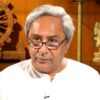UPSC (Mains) 2020: Analysis of General Studies 1 paper
— Abhishek Patil, co-founder CEO, Skholar (Oliveboard)
After a challenging Essay paper, General Studies 1 offered some relief to candidates appearing for UPSC CSE (Mains) 2020. Despite significant change in the weightage allocation to different sections of GS 1 paper, the direct and basic nature of majority of the questions makes it a reasonably good scoring paper.
The following detailed section-wise analysis will give an insight about the nature and difficulty level of the paper.
| Questions | Level | Marks | |
| Indian Heritage and Culture
|
Q 1 | Moderate | 10 |
| Q 2 | Moderate | 10 | |
| Q 11 | Difficult | 15 | |
| Q 12 | Difficult | 15 | |
| Total | 4 | 50 |
Q1. The rock-cut architecture represents one of the most important sources of our knowledge of early Indian art and history. Discuss.
Q2. Pala period is the most significant phase in the history of Buddhism in India. Enumerate.
Q11. Indian Philosophy and tradition played a significant role in conceiving and shaping the monuments and their art in India. Discuss.
Q12. Persian literary sources of medieval India reflect the spirit of the age. Comment.
Analysis
- The weightage for the Art and Culture topic has increased significantly from previous years.
- Questions were a mix of analytical and factual nature and falls in the Moderate to Difficult category.
| Questions | Level | Marks | |
| Modern India
|
Q 3 | Easy | 10 |
| Q 13 | Moderate | 15 | |
| Total | 2 | 25 |
Q3. Evaluate the policies of Lord Curzon and their long term implications on the national movements.
Q.13 Since the decade of the 1920s, the national movement acquired various ideological strands and thereby expanded its social base. Discuss.
Analysis
- Increase in weightage for Art & Culture topic has been compensated with reduced weightage for History.
- No questions on Post-Independence and World History topics were asked.
- Modern India topic was of Easy to Moderate level with straight forward questions.
| Questions | Level | Marks | |
| World Geography | Q 4 | Easy | 10 |
| Q 5 | Easy | 10 | |
| Indian Geography | Q 6 | Easy | 10 |
| Q 14 | Moderate | 15 | |
| Q 15 | Moderate | 15 | |
| Q 17 | Moderate | 15 | |
| Economic Geography | Q 7 | Moderate | 10 |
| Q 16 | Moderate | 15 | |
| Total | 8 | 100 |
World Geography
Q4. Discuss the geophysical characteristics of Circum- Pacific Zone.
Q5. The process of desertification does not have climate boundaries. Justify with examples.
Indian Geography
Q6. How will the melting of Himalayan glaciers have a far- reaching impact on the water resources of India?
Q14. The interlinking of revivers can provide viable solutions to the multi-dimensional inter-related problems of droughts, floods and interrupted navigation. Critically examine.
Q15. Account for the huge flooding of million cities in India including the smart ones like Hyderabad and Pune. Suggest lasting remedial measures.
Q17. Examine the status of forest resources of India and its resultant impact on climate change.
Economic Geography
Q7. Account for the present location of iron and steel industries away from the source of raw material, by giving examples.
Q16. India has immense potential of solar energy though there are regional variations in its developments. Elaborate.
Analysis
- Highest weightage in GS 1 paper was given to Geography, with questions on World, Indian and Economic geography.
- Questions tested the conceptual understanding of the aspirant and were direct in nature.
- Overall the section was on the Easy to Moderate side.
| Questions | Level | Marks | |
| Society
|
Q 8 | Difficult | 10 |
| Q 9 | Moderate | 10 | |
| Q 10 | Difficult | 10 | |
| Q 18 | Moderate | 15 | |
| Q 19 | Difficult | 15 | |
| Q 20 | Moderate | 15 | |
| Total | 6 | 75 |
Q8. Has caste lost its relevance in understanding the multi- cultural Indian Society? Elaborate your answer with illustrations.
Q9. COVID-19 pandemic accelerated class inequalities and poverty in India. Comment.
Q10. Do you agree that regionalism in India appears to be a consequence of rising cultural assertiveness? Argue.
Q18. Is diversity and pluralism in India under threat due to globalisation? Justify your answer.
Q19. Customs and traditions suppress reason leading to obscurantism. Do you agree?
Q20. How have digital initiatives in India contributed to the functioning of the education system in the country? Elaborate your answer.
Analysis
- Society section was the trickiest part in the whole paper, with open-ended questions.
- Questions tested the analytical ability and knowledge on Indian society by demanding real-life examples and opinions.
- Overall the section was of Moderate to Difficult level.
In short, smartness to tackle the society section and a good command over concepts and important topics of History and Geography would have helped aspirants sail through this paper comfortably.
Also read:
UPSC (Mains) 2020: Analysis of General Studies 2 paper
UPSC prelims 2021: Step by Step guide for the next 7 months!

















Add comment